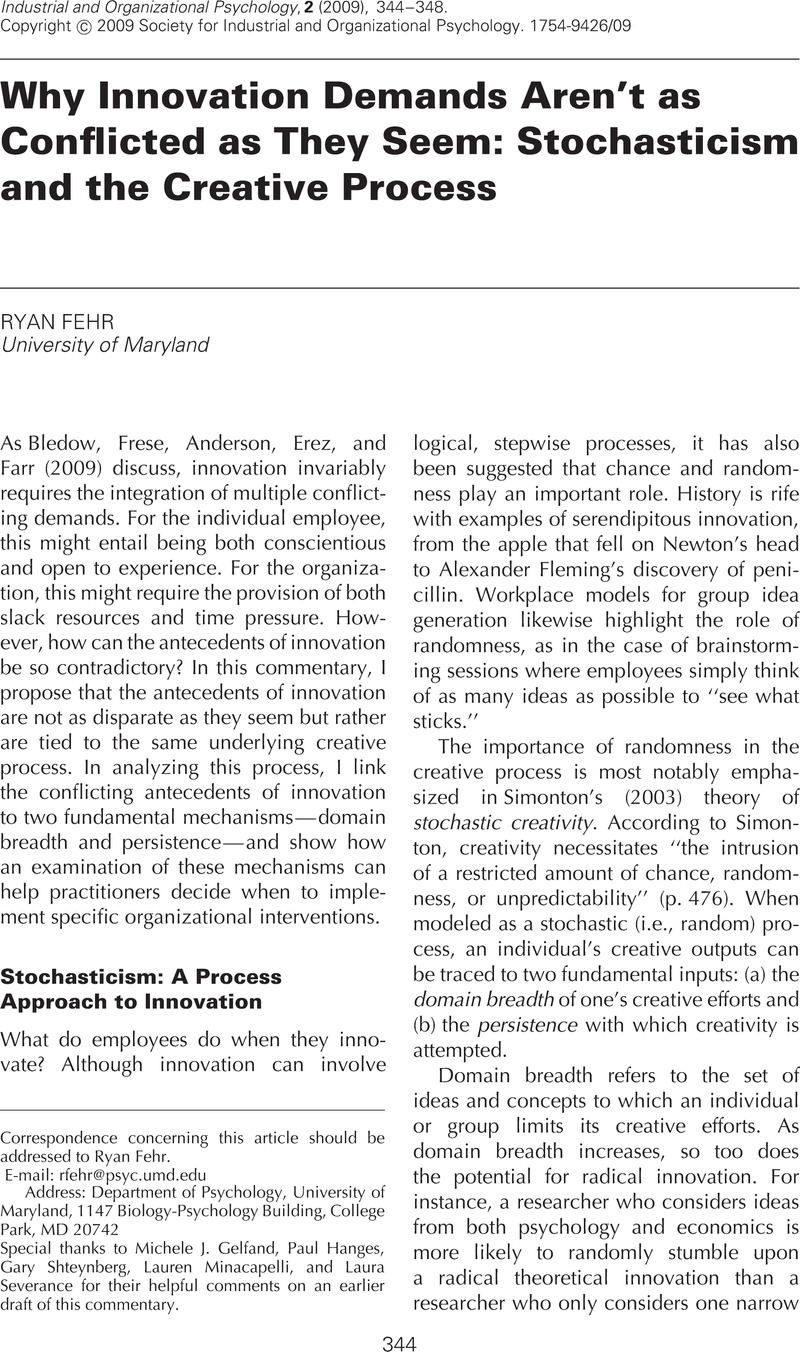Crossref Citations
This article has been cited by the following publications. This list is generated based on data provided by Crossref.
Bledow, Ronald
Frese, Michael
Anderson, Neil
Erez, Miriam
and
Farr, James
2009.
Extending and Refining the Dialectic Perspective on Innovation: There Is Nothing as Practical as a Good Theory; Nothing as Theoretical as a Good Practice.
Industrial and Organizational Psychology,
Vol. 2,
Issue. 3,
p.
363.
Rosing, Kathrin
Frese, Michael
and
Bausch, Andreas
2011.
Explaining the heterogeneity of the leadership-innovation relationship: Ambidextrous leadership.
The Leadership Quarterly,
Vol. 22,
Issue. 5,
p.
956.
Steel, G. Daniel
Rinne, Tiffany
and
Fairweather, John
2012.
Personality, Nations, and Innovation.
Cross-Cultural Research,
Vol. 46,
Issue. 1,
p.
3.
Cienfuegos, Ignacio
and
Vera, Angélica
2019.
Facilitadores e inhibidores de la innovación pública: percepción desde la red de innovadores en Chile.
Revista del CLAD Reforma y Democracia,
Jiang, Yifan
Wang, Qiong
and
Weng, Qingxiong (Derek)
2021.
Personality and Organizational Career Growth: The Moderating Roles of Innovation Climate and Innovation Climate Strength.
Journal of Career Development,
Vol. 48,
Issue. 4,
p.
521.
Usman, Muhammad
Ghani, Usman
Islam, Zia Ul
Gul, Habib
and
Mahmood, Khalid
2022.
Ambidextrous leadership and innovative work behaviors: Workplace thriving as a mediator.
Journal of Public Affairs,
Vol. 22,
Issue. 1,



